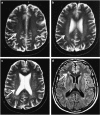Hereditary spastic paraplegia in Greece: characterisation of a previously unexplored population using next-generation sequencing
- PMID: 26374131
- PMCID: PMC4688955
- DOI: 10.1038/ejhg.2015.200
Hereditary spastic paraplegia in Greece: characterisation of a previously unexplored population using next-generation sequencing
Abstract
Hereditary Spastic Paraplegia (HSP) is a syndrome characterised by lower limb spasticity, occurring alone or in association with other neurological manifestations, such as cognitive impairment, seizures, ataxia or neuropathy. HSP occurs worldwide, with different populations having different frequencies of causative genes. The Greek population has not yet been characterised. The purpose of this study was to describe the clinical presentation and molecular epidemiology of the largest cohort of HSP in Greece, comprising 54 patients from 40 families. We used a targeted next-generation sequencing (NGS) approach to genetically assess a proband from each family. We made a genetic diagnosis in >50% of cases and identified 11 novel variants. Variants in SPAST and KIF5A were the most common causes of autosomal dominant HSP, whereas SPG11 and CYP7B1 were the most common cause of autosomal recessive HSP. We identified a novel variant in SPG11, which led to disease with later onset and may be unique to the Greek population and report the first nonsense mutation in KIF5A. Interestingly, the frequency of HSP mutations in the Greek population, which is relatively isolated, was very similar to other European populations. We confirm that NGS approaches are an efficient diagnostic tool and should be employed early in the assessment of HSP patients.
Figures



References
-
- Lo Giudice T, Lombardi F, Santorelli FM, Kawarai T, Orlacchio A: Hereditary spastic paraplegia: Clinical-genetic characteristics and evolving molecular mechanisms. Exp Neurol 2014; 261: 518–539. - PubMed
-
- Noreau A, Dion PA, Rouleau GA: Molecular aspects of hereditary spastic paraplegia. Exp Cell Res 2014; 325: 18–26. - PubMed
-
- Ruano L, Melo C, Silva MC, Coutinho P: The global epidemiology of hereditary ataxia and spastic paraplegia: a systematic review of prevalence studies. Neuroepidemiology 2014; 42: 174–183. - PubMed
-
- Buermans HPJ, den Dunnen JT: Next generation sequencing technology: advances and applications. Biochim Biophys Acta 2014; 1842: 1932–1941. - PubMed
MeSH terms
Substances
Grants and funding
LinkOut - more resources
Full Text Sources
Other Literature Sources

